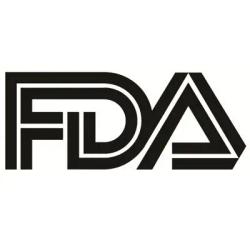
OR WAIT null SECS
SAGA Trial Results for Gildeuretinol Treating Geographic Atrophy with David Boyer, MD
The recent trial indicates that the oral treatment gildeuretinol reduces GA lesion growth rates, as well as achieving better BCVA scores.
At the 2025 Association for Research in Vision and Ophthalmology (ARVO) Annual Meeting, David Boyer, MD, adjunct clinical professor of ophthalmology at the Keck School of Medicine at the University of Southern California, presented results of the SAGA trial, which evaluated gildeuretinol in treating geographic atrophy (GA) secondary to age-related macular degeneration (AMD).
SAGA, a 24-month, double-masked, randomized, placebo-controlled study, enrolled 198 participants, who were then randomized in a 2:1 ratio to receive gildeuretinol 14 mg per day (n = 135) or placebo (n = 63). The mean age of enrolled participants was 78.4 years, and 68% of patients were female.1
The primary endpoint was GA lesion growth rate from baseline to 24 months on fundus autofluorescence (FAF); secondary endpoints included change at 24 months in low luminance visual acuity (LLVA) and best-corrected visual acuity (BCVA), Visual Function Questionnaire (VFQ)-25 score, and Functional Reading Independence (FRI) index score.1
“It would be a hard sell for me at this point to use one of the current FDA approved complement inhibitors in a patient with intermediate AMD with 20/30, 20/40 vision,” Boyer told HCPLive. “These patients have great vision, but they’d have to come in frequently and get intravitreal injections, and the risk-benefit ratio at that point for intermediate AMD is too high.”
Boyer and colleagues noted that mean GA lesion growth was reduced with gildeuretinol when compared to placebo (-.25 mm2/year; 95% CI, -.53 to .03; P = .075). This was measured through a pre-specified sensitivity analysis evaluating GA lesion growth from 6 to 24 months, which demonstrated a significant reduction in GA lesion growth rate: -.29 mm2/year (15.4%; 95% CI, .58 to 0.0; P = .0468).1
At 24 months, the gildeuretinol group lost fewer LLVA and BCVA letters than placebo, with differences of mean 4.402 letters (P = .0314 [nominal]) and 3.3 letters (P = .0990) less, respectively. Additionally, investigators associated gildeuretinol with a smaller reduction VFQ-25 and FRI index scores over time. Most treatment-emergent adverse events were mild or moderate, and notably, the safety profile exhibited no indication of delayed dark adaptation, chromatopsia, or vasculitis.1
While SAGA did not achieve its primary endpoint of FAF change, Boyer and colleagues still consider the trial a success, as it exhibited fewer vision losses and better low luminance vision versus sham. Additionally, it has the capacity to seriously alleviate treatment burden, as an orally administered drug requires far fewer clinical visits and injections.1
Currently, plans for a Phase 3 trial testing gildeuretinol for GA have not been announced; instead, parent company Alkeus Pharmaceuticals is moving forward with testing the medication for the treatment of Stargardt disease. However, Boyer is anticipating an eventual GA Phase 3 trial, as the medication may prove a turning point in the study of GA lesions.
“This would be, to me, a fairly easy trial to enroll,” Boyer said. “I think that with having a safe oral medication that may be able to be entertained earlier in the course of AMD, possibly slowing down the process, is extremely important. So, I look forward to when they do their phase 3 trial, to participating, and to hopefully help prevent our patients from progressing further.”
Editors' note: Boyer reports the following disclosures: Alexion, Biogen, Novartis, Ophthea, 4DMT, and others
References
Boyer D, Saad L, Washington I, et al. Oral Gildeuretinol Treatment in Geographic Atrophy Secondary to AMD in the SAGA Trial: Safety, Efficacy and Patient-Reported Outcomes. Abstract presented at Association for Research in Vision and Ophthalmology in Salt Lake City, UT, from May 3-May 8, 2025.


